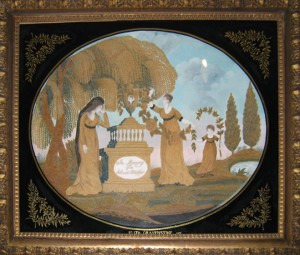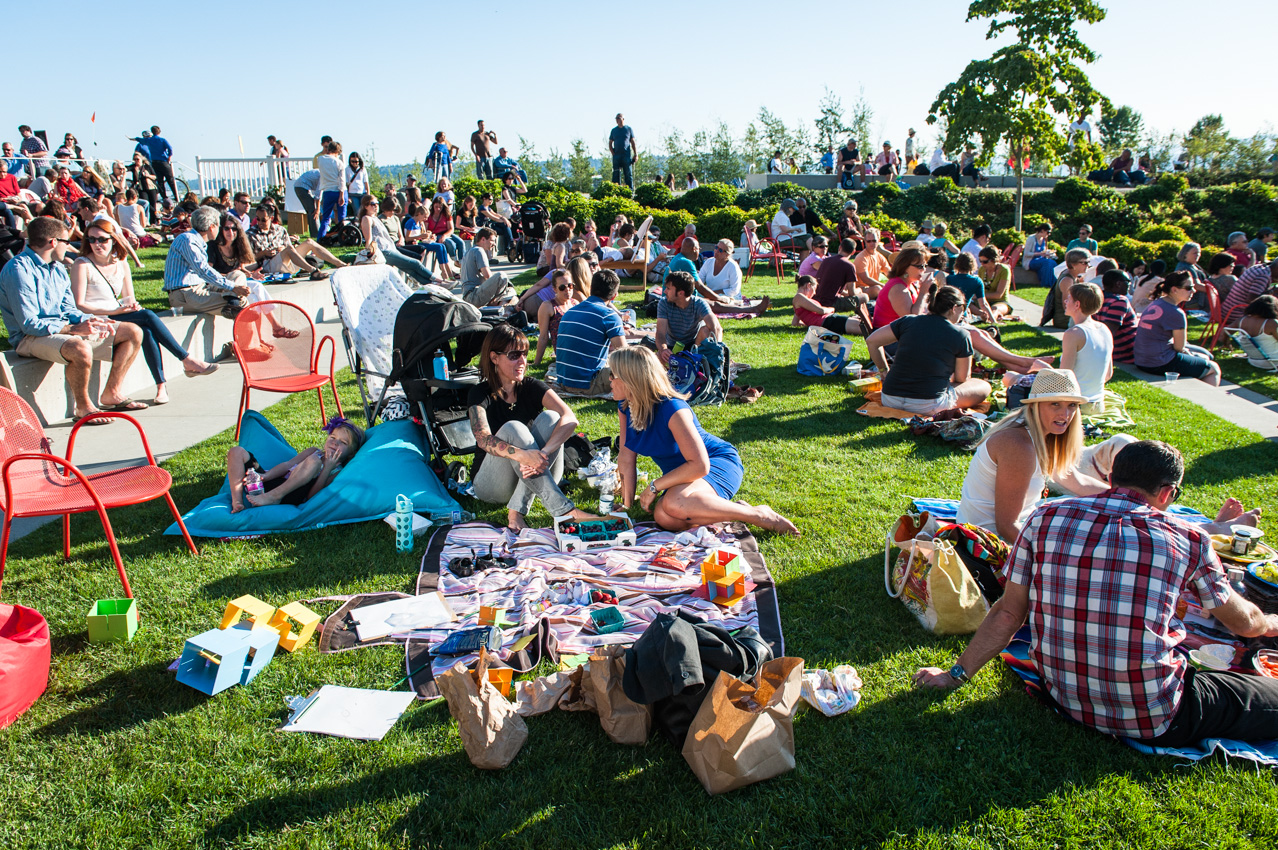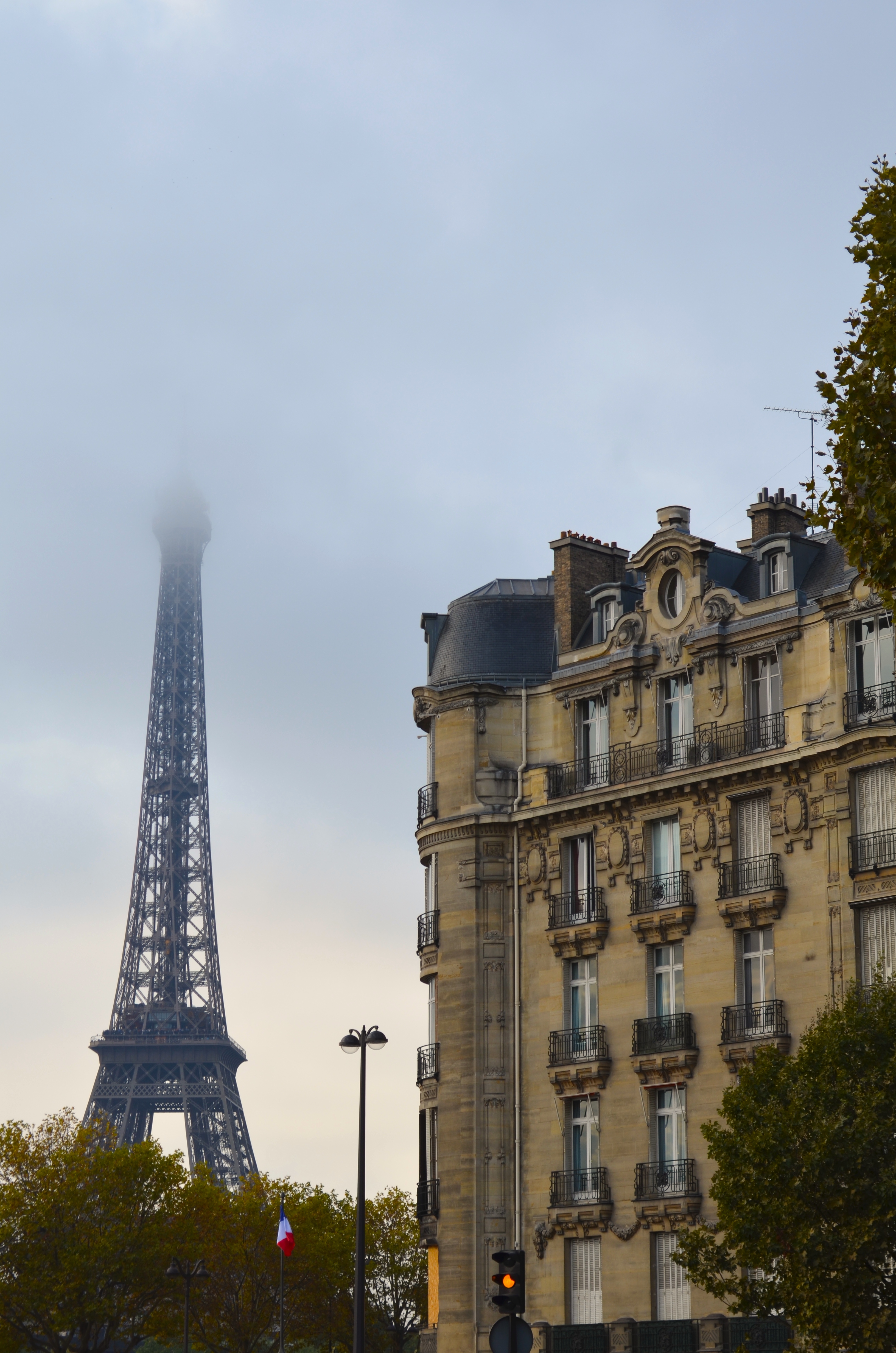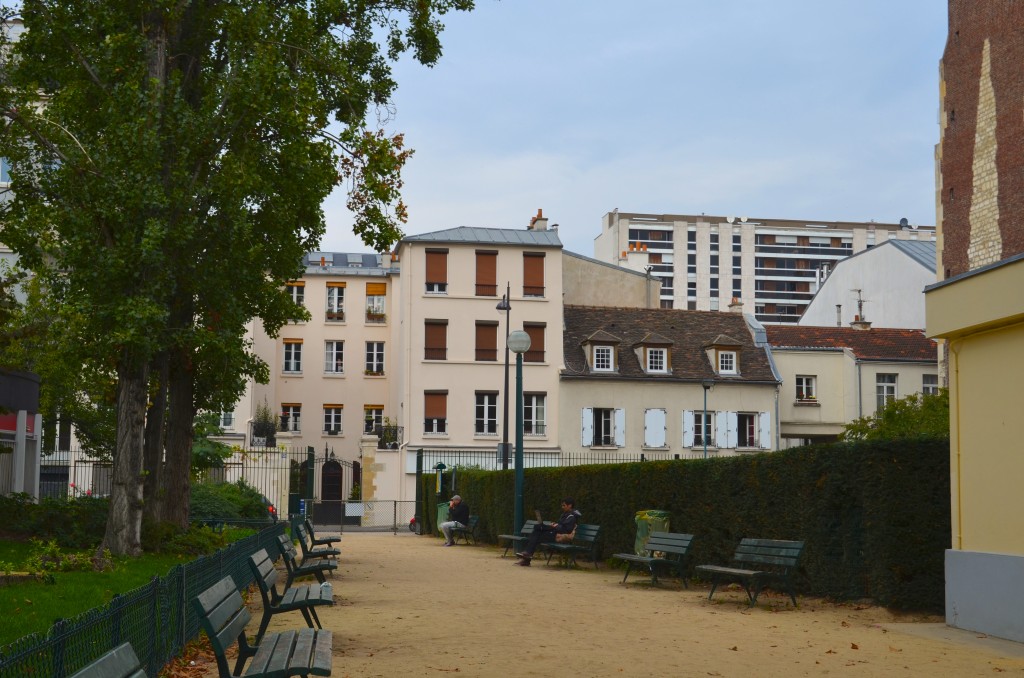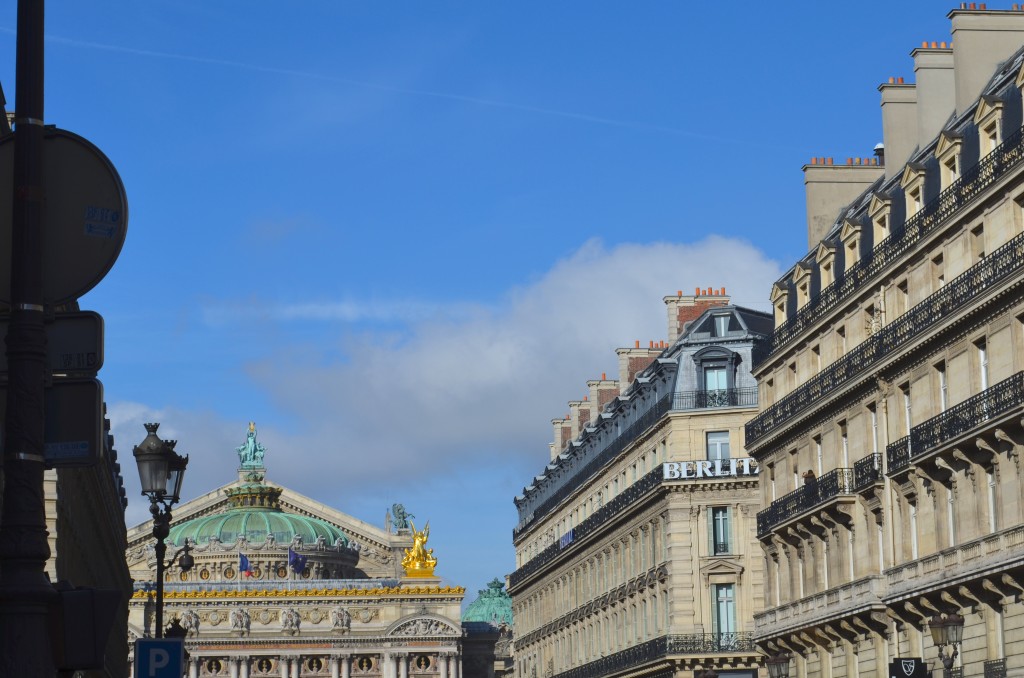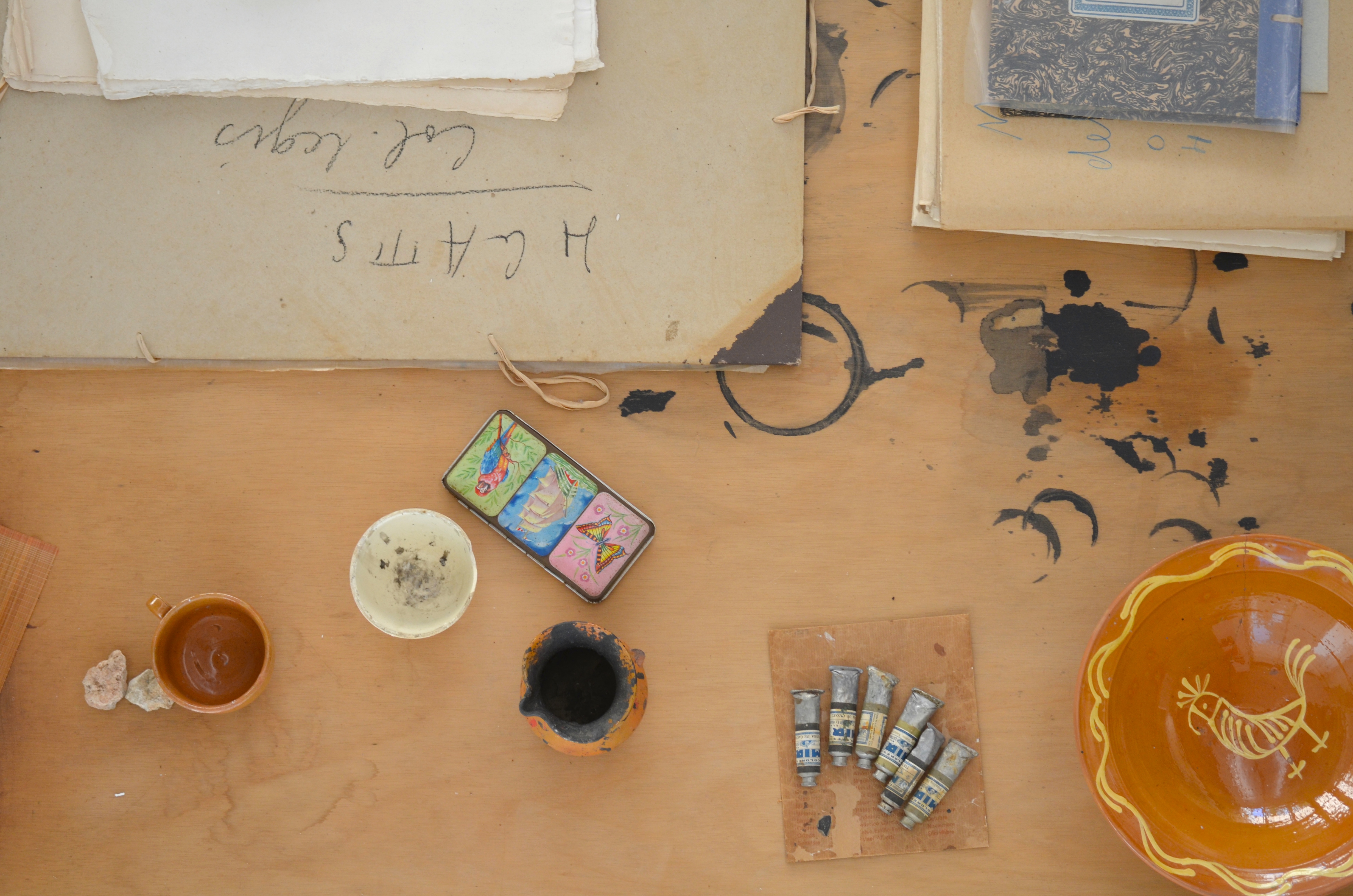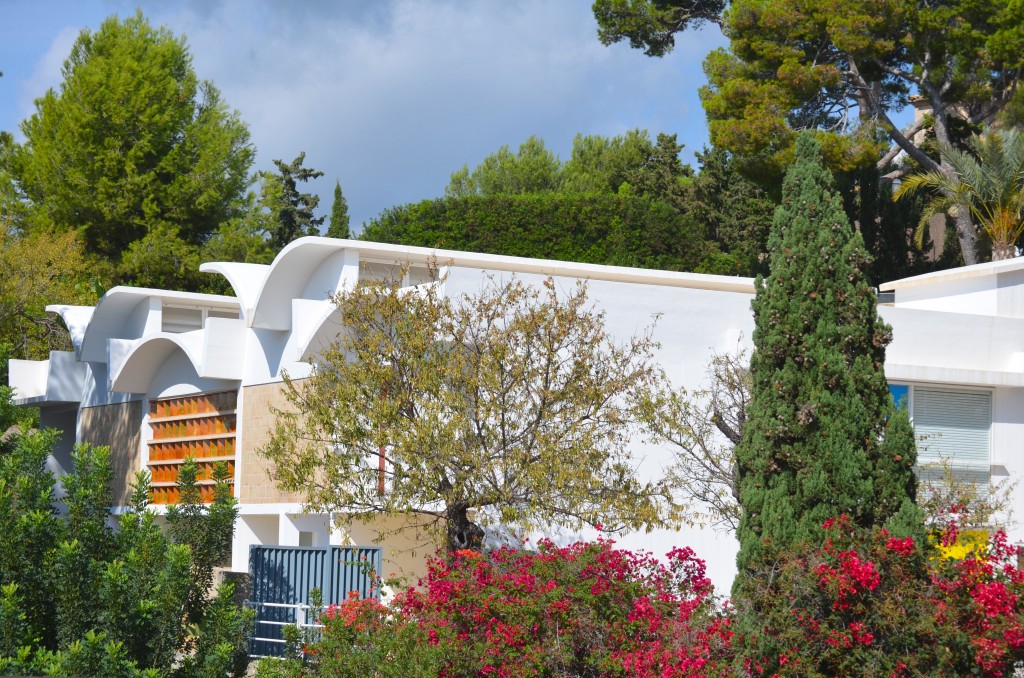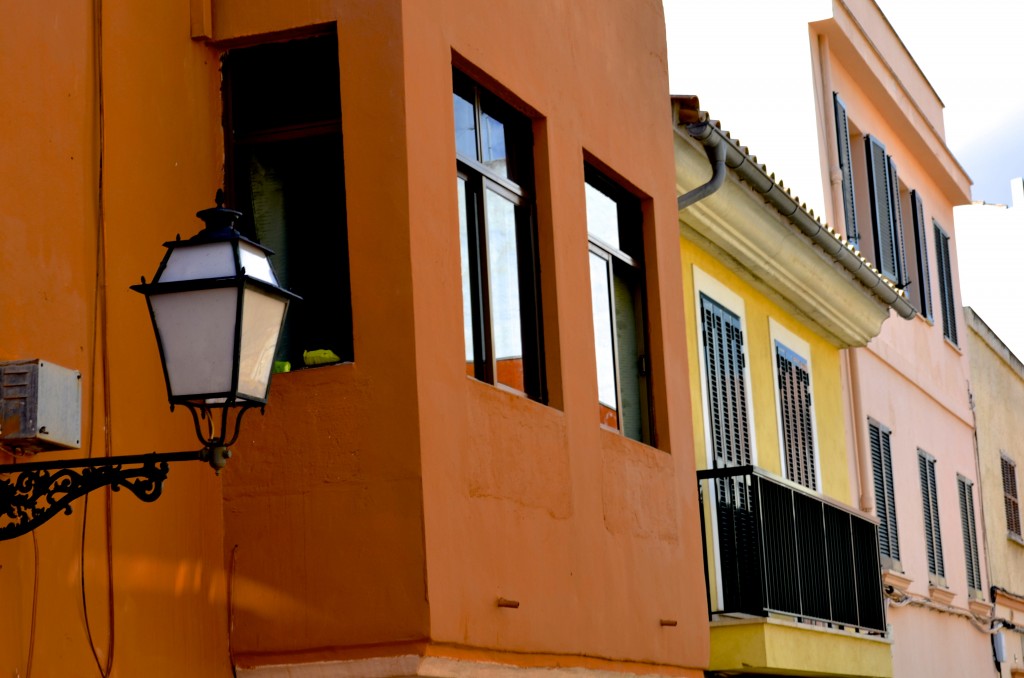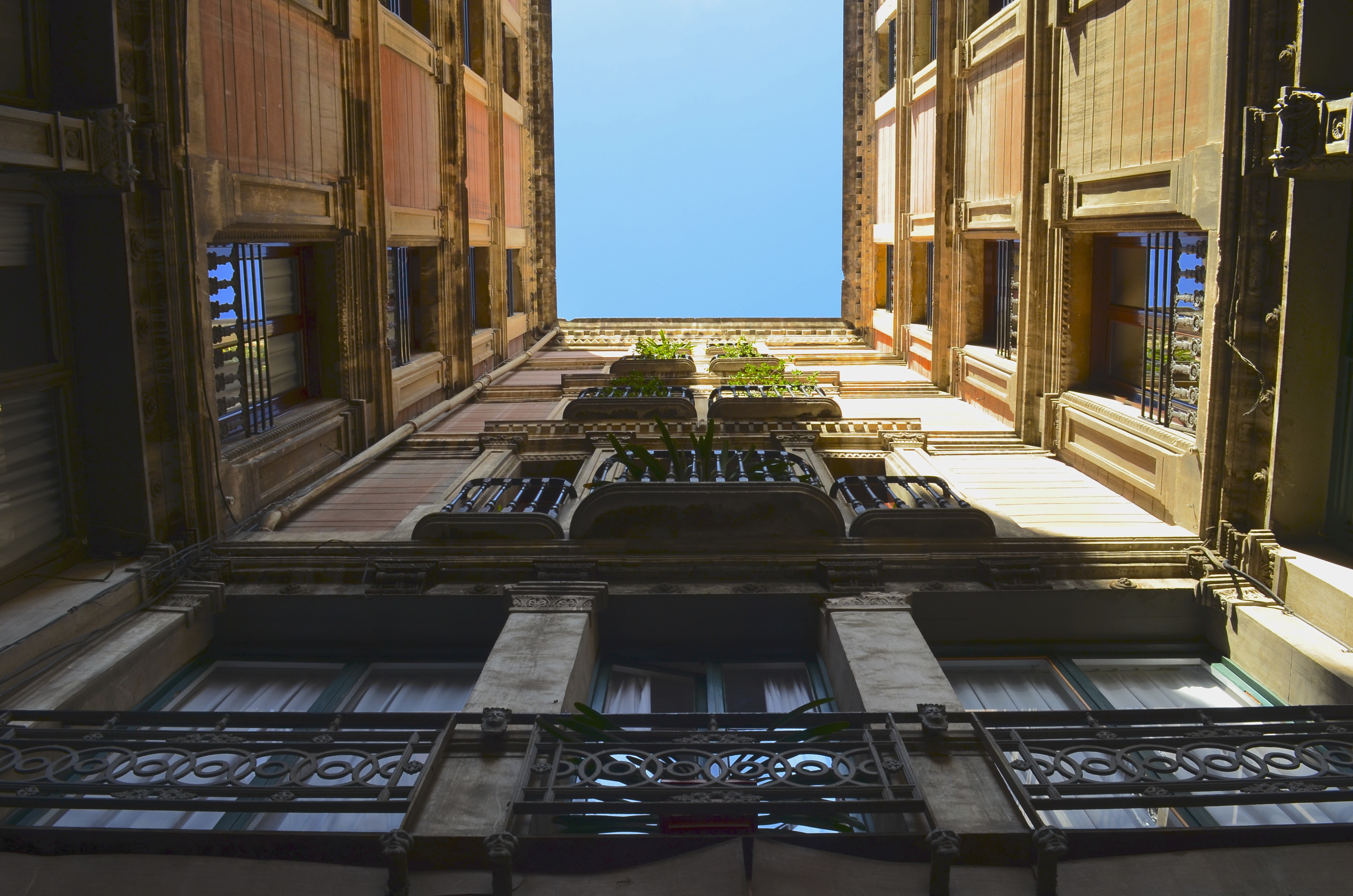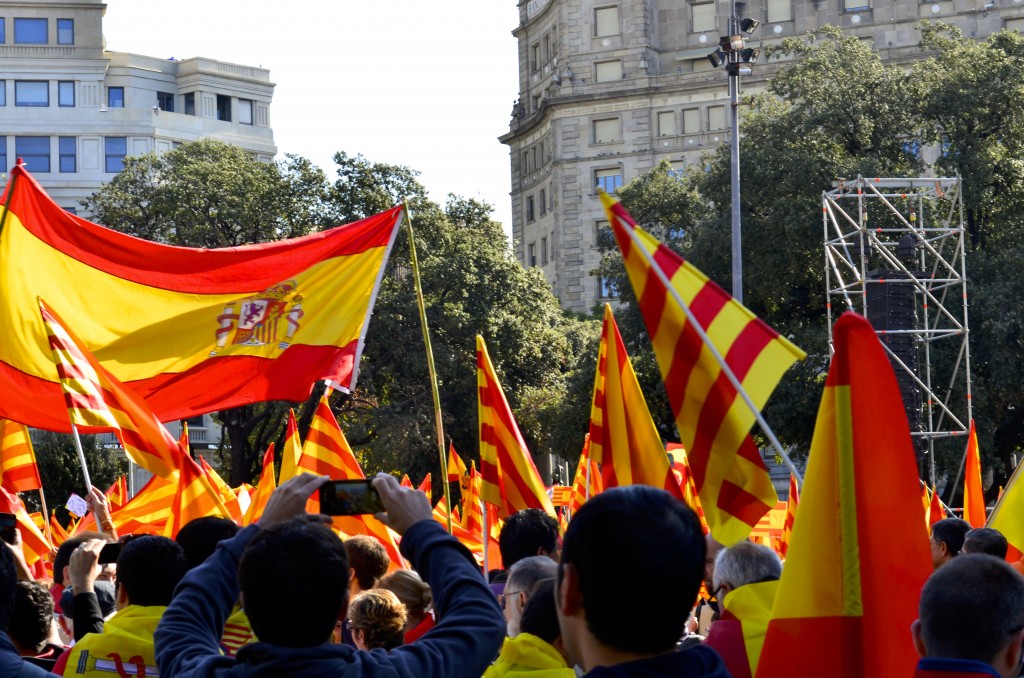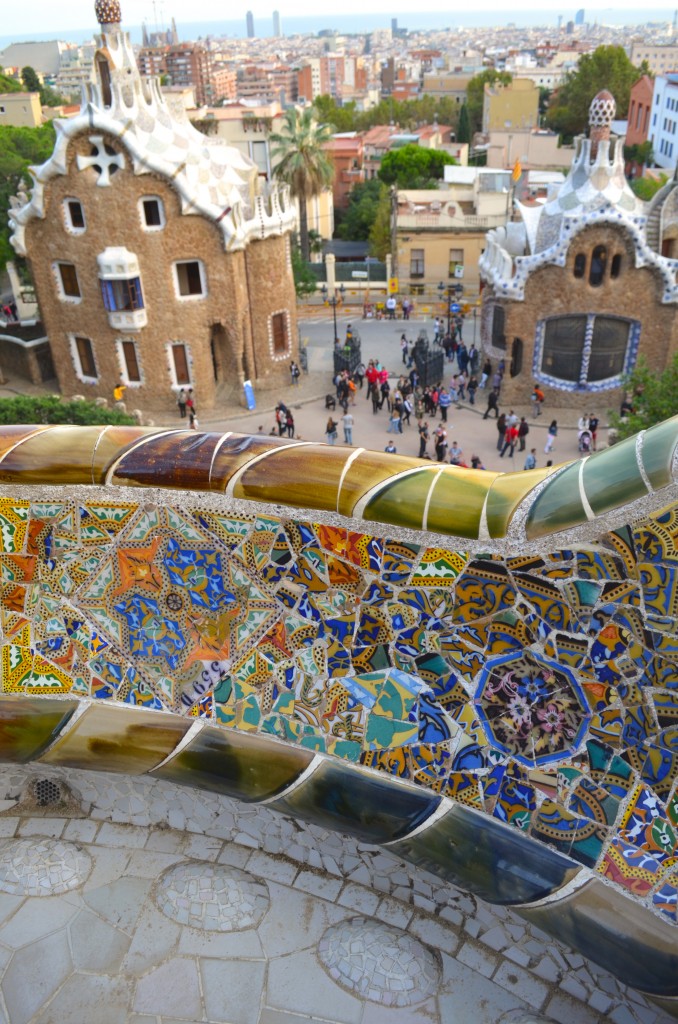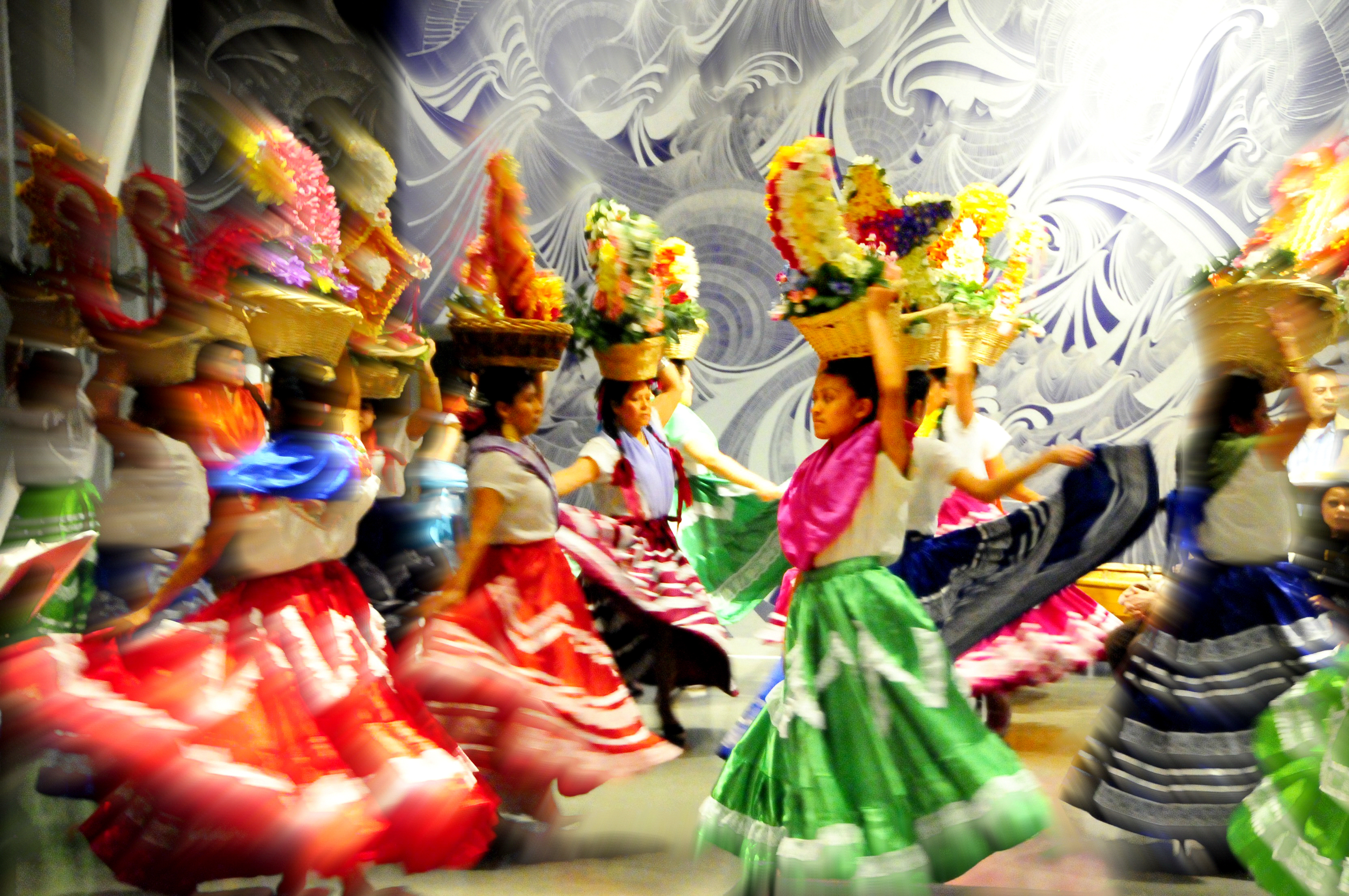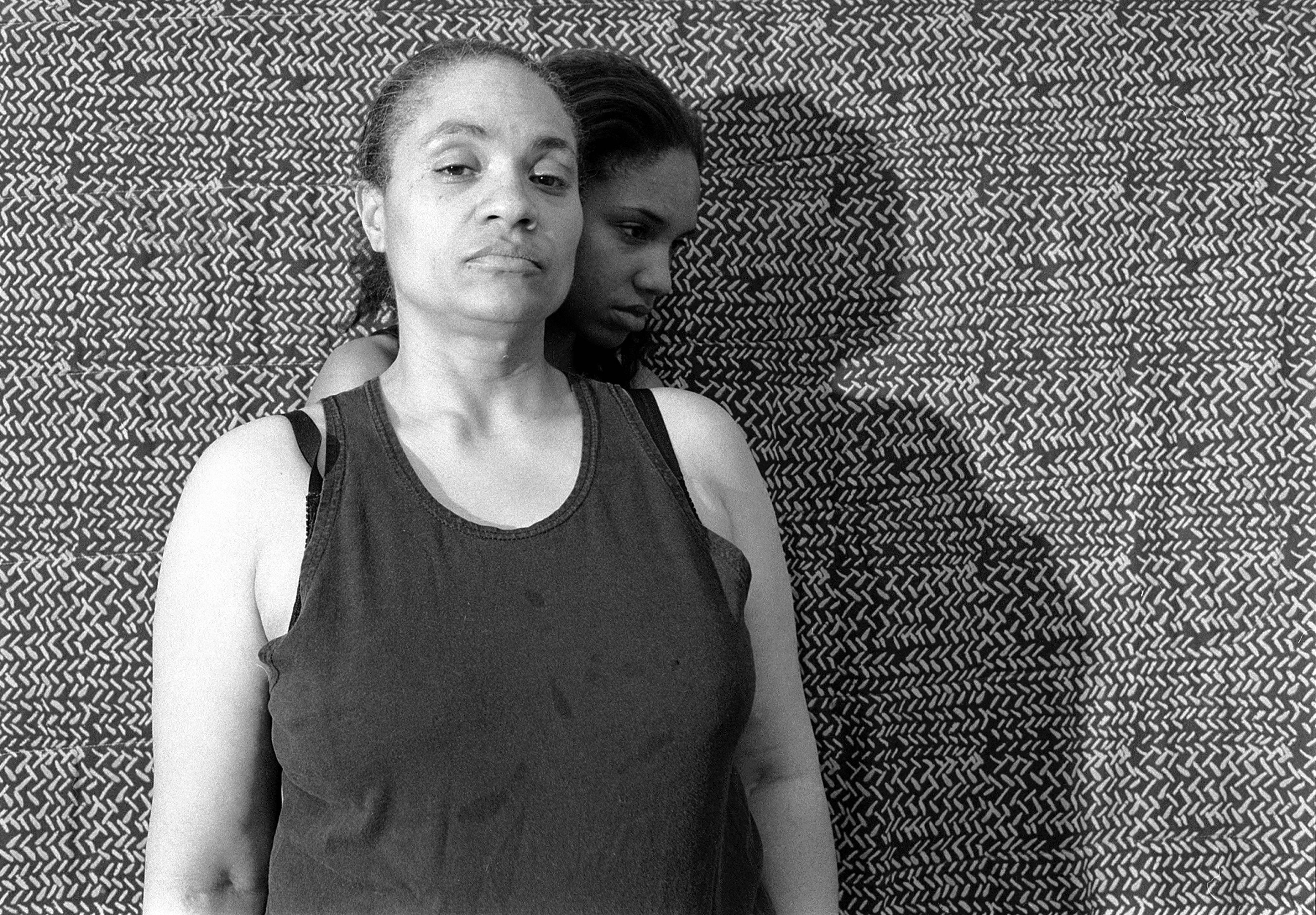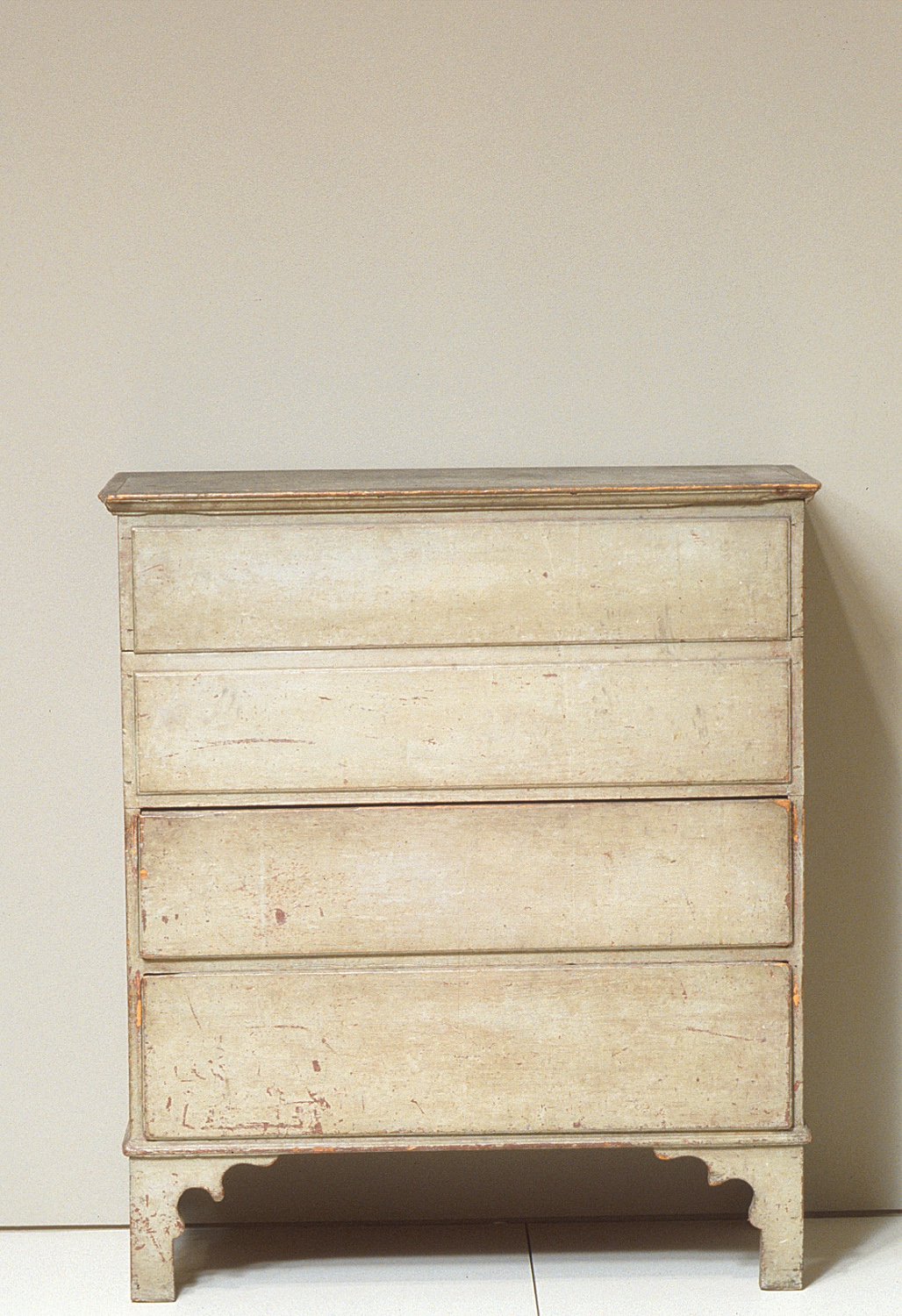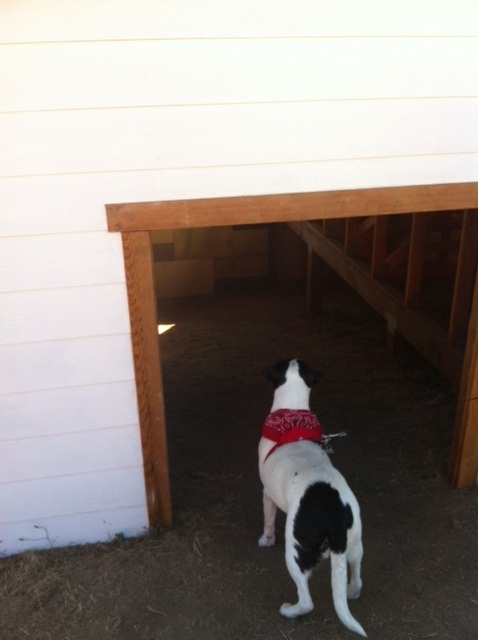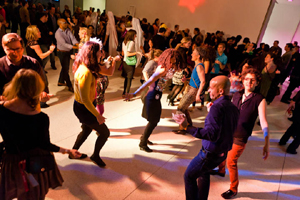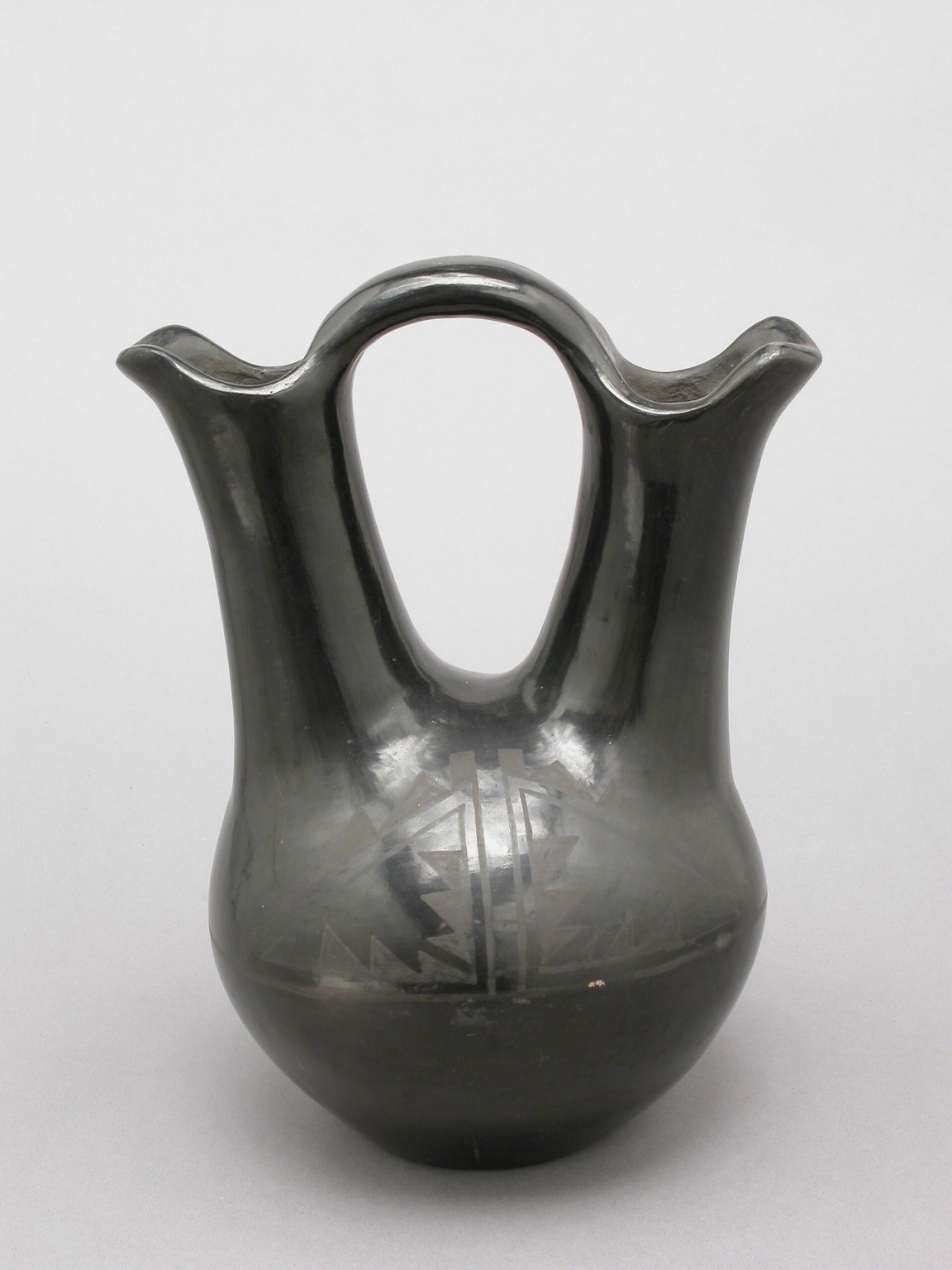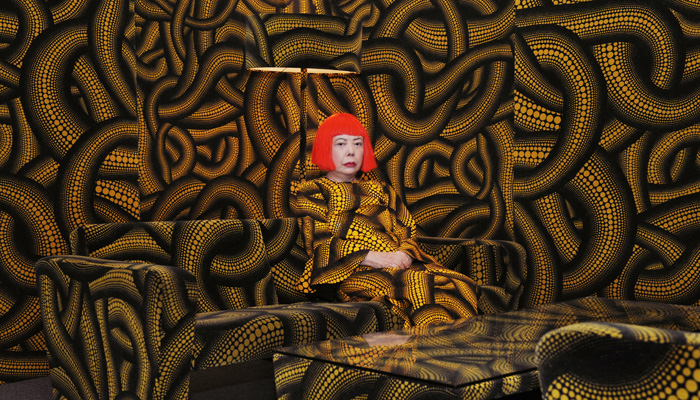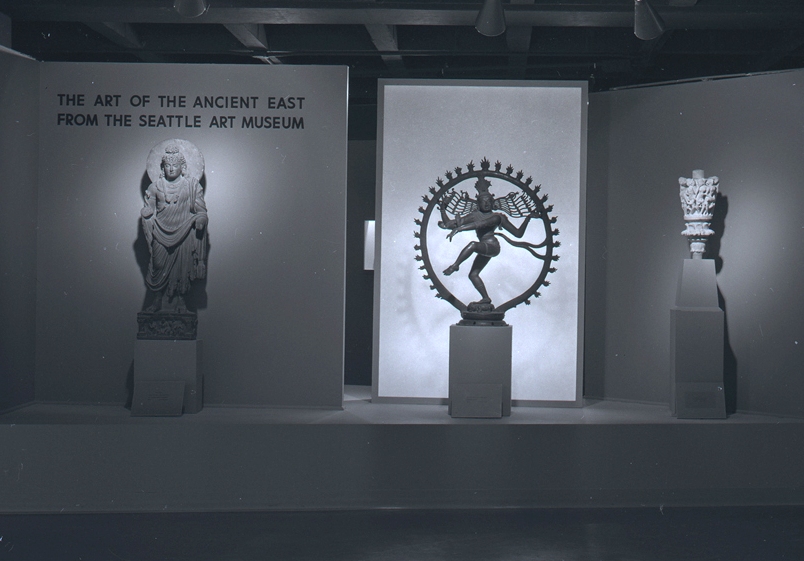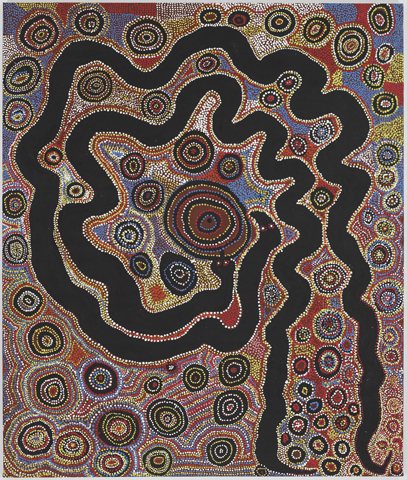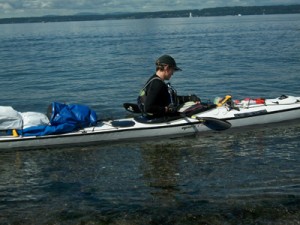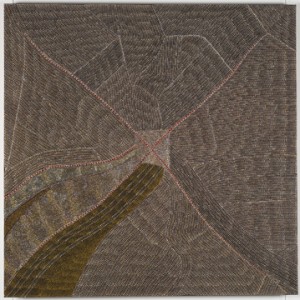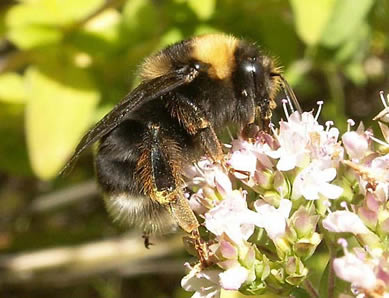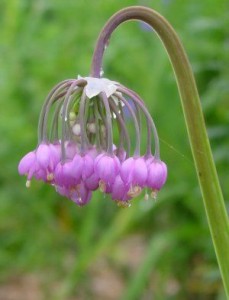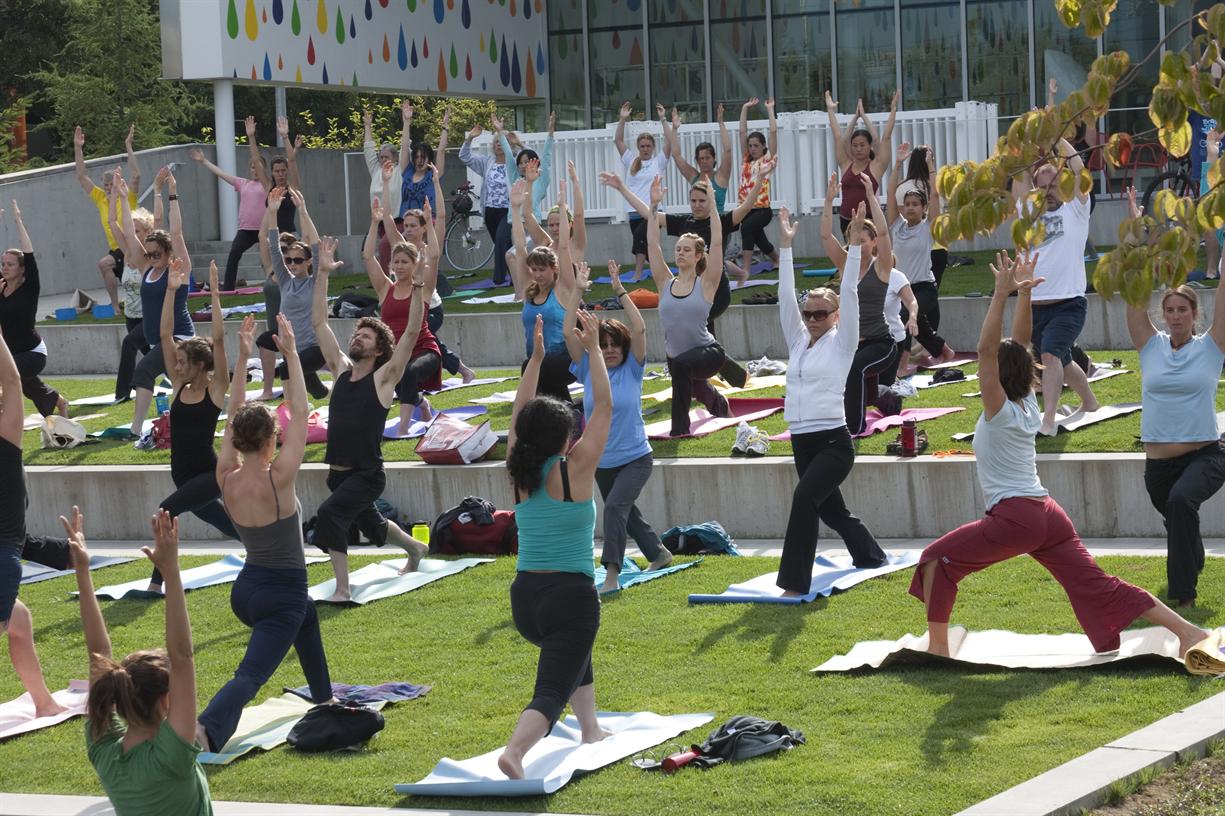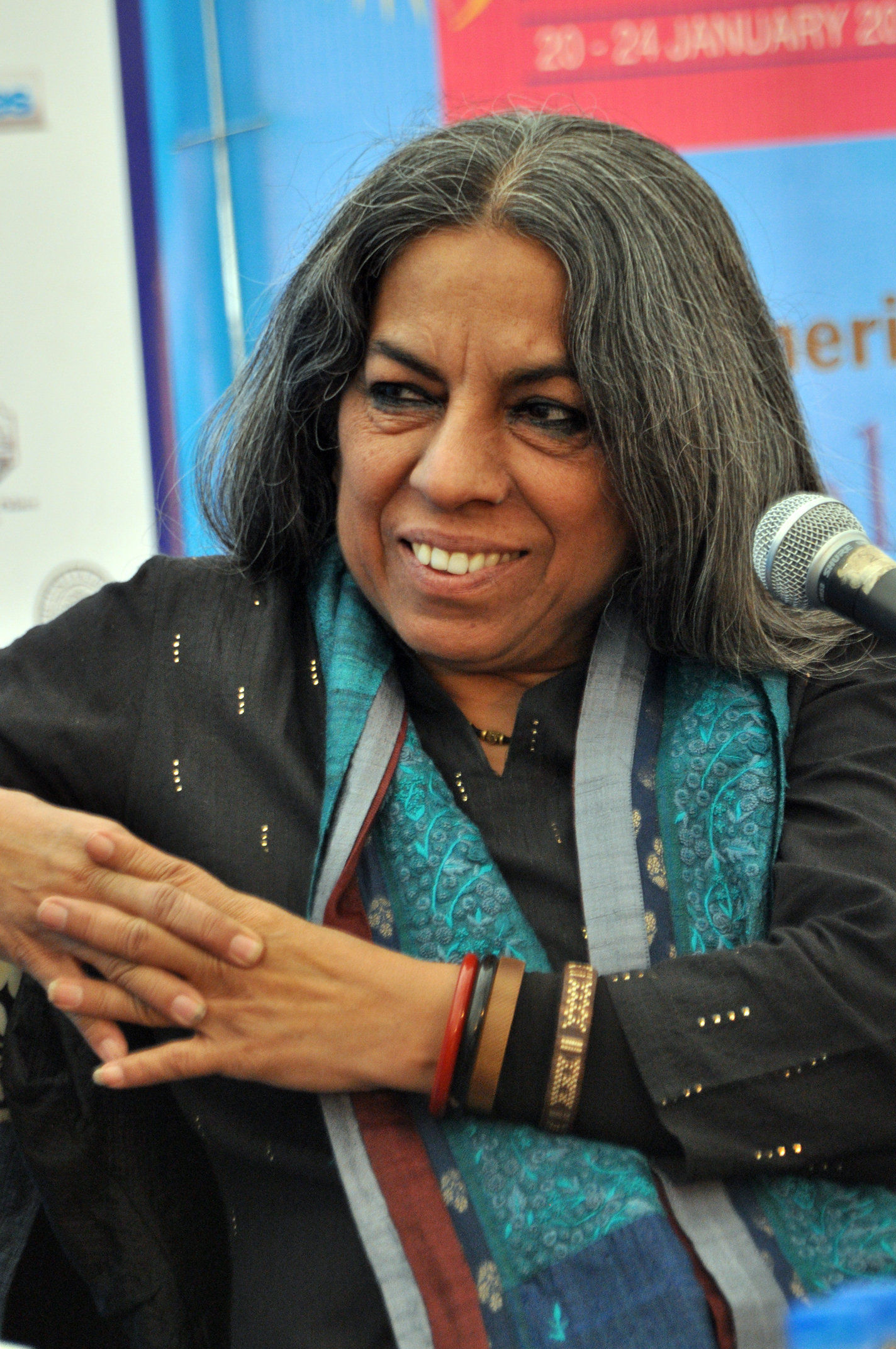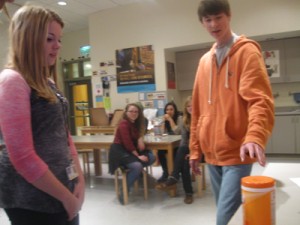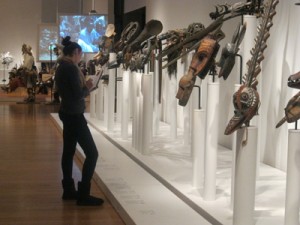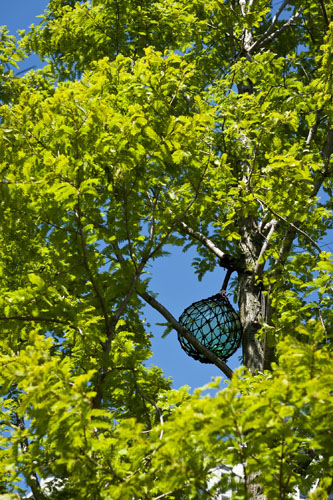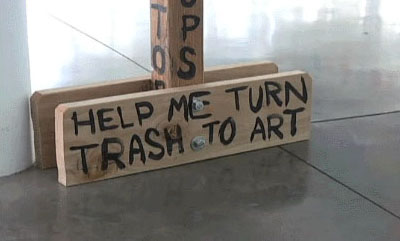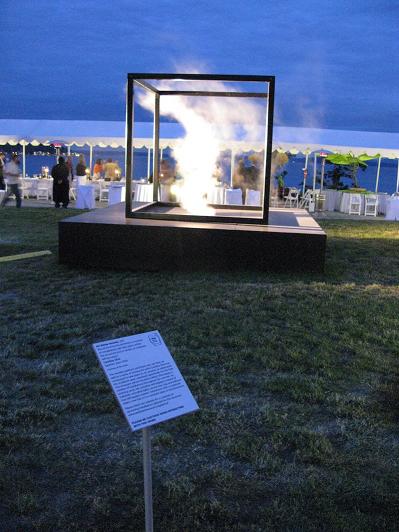This summer, intern Sholeh Hajmiragha has been working with me on two projects. Her first project was to sift through years of accumulated notes on SAM’s maiolica collection, and update our records according to the best and most recent information. Her second project was different. She tells you more, below.
-Sarah Berman, Curatorial Associate for Collections
In the last three weeks of my curatorial internship at the Seattle Art Museum, I was given a project – to imagine that I had the power and the unlimited funding to acquire any and all art from contemporary artists in the Middle East. This exercise was consuming and exciting, and it allowed me to gain a much greater insight into the acquisition process and research required in acquiring art. On this last day of my internship, and for my farewell blogpost, I’ve decided to share one of my favorite artists that I researched during this exercise – ninety-eight year old Saloua Raouda Choucair.
Saloua Raouda Choucair represents an oversight in the western conception of contemporary art history. Born in Beirut in 1916, Choucair is heralded as a pioneer of abstract art in the Arab world, though until recently Choucair was largely unknown outside of Lebanon. Now in her ninety-eighth year, Choucair’s most recent exhibition at Tate Modern in 2013 was the first time her work has been shown publicly on a global scale. In this regard, Choucair’s work can be considered new, with herself an unknown artist. Yet, what makes her work significant is the reality that Choucair has been working as a female artist in the Beirut art scene from the 1940s, studying in the studio of Fernand Léger in Paris, and producing abstract art alongside the historical western modernist art movement. Maymanah Farah writes in her essay “Saloua Raouda Choucair: Reinventing Abstraction”, “One of the many myths of the Western canon is that European modern artists invented abstraction…At the moment, there is a multidisciplinary campaign to correct the shortcomings of this history of Modernism by looking past the borders of Euro-American art centers. It is within the experiments of artists who are noticeably absent from the Western view of art history, despite having been in pursuit of modern aesthetics, that examples of pre-modern abstraction are beginning to be reevaluated.”[1] Choucair’s work is a perfect example of this as her abstract, modern forms and figures reflect both modernism aesthetics as well as historical Islamic art forms.
Choucair’s art encompasses the intersections of time, space, and place. Though existing in the artistic school of western modernism, Choucair’s abstraction is distinct and notable. As Samir Sayigh writes, “this abstraction, despite its proximity to that characterized by modern art in the great artistic capitals of the world, and despite its singularity in Lebanon and the Arab nation, remained an abstraction converging with the contemporary characteristics which characterize Eastern art, and more specifically Arab Islamic art, much more than with Western abstraction as perceived by Kandisnsky, presented by Mondrian, and realized in the Bauhaus Collection.”[2] In addition to this dialogue of east and west lies another relationship of the object and space. Not only does Choucair manipulate her paintings to reflect depth and form, but her three-dimensional sculptures present not only an abstraction of architecture and space and the manipulation of shape and form, but also bridge the divide between language and text and art and space. Choucairs complex, interlocking sculptures are a clear example of this. Choucair creates sculptural poetry that is constructed through various building blocks and carefully molded shapes that fit together and connect, creating a larger holistic form. As Choucair has stated, “The way I organized my sculptural poems, for example, was inspired by Arabic poetry. I wanted rhythm like the poetic meter, to be at once more independent and interlinked, and to have lines like meanings, but plastic meanings.”[3] In this manner, Choucair translates the very deeply rooted Arabic cultural tradition of poetry into a modern and abstract art form that physically embodies a simultaneous interlocked dependence with a detached and separable independence.
Besides her sculptural work, her paintings reflect dualities as well. In her painting Paris-Beirut, Choucair depicts an Islamic star, Cleopatra’s Needle, and the Arc de Triomphe in their most basic forms and shapes, both juxtaposed geographically and culturally, yet balanced compositionally, reflecting both an exchange between the east and west, while also hinting toward Choucair’s own decision to return to Beirut, rather than stay in Paris. In her piece Les Peintres Célèbres, Choucair presents a scene reminiscent of Fernand Léger’s Le Grand Déjeuner, while transforming it to reflect a new representation of women, presenting a contemporary artistic exchange between Choucair in Beirut and Léger in Paris. Adrian Searle of The Guardian compares this painting to her former instructor Fernand Léger’s Le Grand Dé jeuner, writing, “The differences are telling, not least because the women don’t seem bothered by our gaze. Instead, they look at art books, one of which has the title Les Peintres Célèbres (The Famous Painters), which also gives the title of these small studies. Where Léger’s bodies are polished and overblown, these are wonkier, offhand and much more human. Choucair’s little paintings depict women among women, oblivious to whoever stares at them.” Finally, her painting Two=one, which Tate Modern chose to include in its exhibition, contextualizes Choucair within the time and place of Lebanon in the late twentieth century. Riddled with glass shards, chipping paint, and a large gaping hole in its center, this painting was damaged by a bomb blast during the Lebanese Civil War (1975-1990). Though no longer in the state it was intended, this piece highlights the reality of Choucair’s life in Beirut. As Kevin Jones of ArtAsiaPacific writes, “Already in her 60s, with decades of study and practice behind her, when conflict broke out in Lebanon, Choucair simply had no artistic language to admit the war into her practice: her work was entirely rational, scientific, engineered almost to the exclusion of the human and the social. The incursion of the war literally into the flesh of her practice with Two=one illustrates the potentially destructive force of forgetting: occluded memory, as much as the war itself, was Choucair’s nemesis.”[4]
For me, reading about and researching Choucair and her art was both inspiring and incredibly humbling. The vast amount of work that she produced over her extensive life, with little to no recognition beyond her local art scene, is really profound. This exercise in acquisition research highlighted for me the power and significance of displaying and curating art. The power of her work lies not only in the art itself, but in the fact that it is now able to be seen and appreciated, showing not only her artistic achievements, but also her own life history.
-Sholeh Hajmiragha, Curatorial Intern, 2014
[1] Maymanah Farahat, “Saloua Raouda Choucair: Reinventing Abstraction”, Saloua Raouda Choucair, ed. Jessica Morgan (London: Tate Publishing, 2013), http://www.jadaliyya.com/pages/index/14828/saloua-raouda-choucair_reinventing-abstraction-.
[2] Samir Sayigh, trans. Anna Swank, “Saloua Raouda Choucair: Distinctiveness of Style and Individuality of Vision”, ArteEast (2008), <http://www.arteeast.org/2012/03/04/saloua-raouda-choucair-distinctiveness-of-style-and-individuality-of-vision/>.
[3] Quoted in Mulhaq al-Nahar, 23 September 1995, p. 10, as recorded in Tate Modern summary of Poem (1963-5): <http://www.tate.org.uk/art/artworks/choucair-poem-t13278/text-summary>.
[4] Kevin Jones, “Memory, Corrected: Saloua Raouda Choucair”, ArtAsiaPacific, Issue 88, May/June 2014, <http://artasiapacific.com/Magazine/88/MemoryCorrected>.
